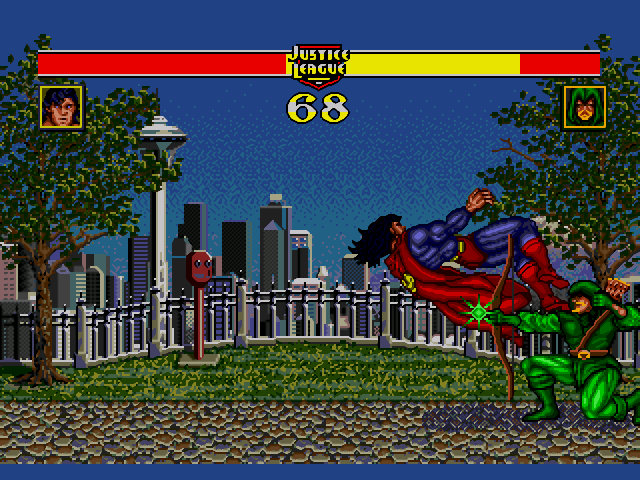
RPGs were not selling as well as they used to. “We kept hearing that RPGs were dead, which at the time was kind of true.

“It got rejected many, many times,” Brevik says. It already had a name - Diablo - but nobody was biting. It would strip back the social elements of the roleplaying genre in favour of action, and bring the spirit of the pre-Windows ASCII dungeon crawlers the team had played in their youth to modern systems.


“So we would go to the Consumer Electronics Show and pitch different game publishers on our ideas.” That year, their big concept was a gothic roguelike. “Our dream wasn’t to make these work-for-hire contracts it was making an original PC game,” Brevik says. The studio had only picked up the spandex-clad beat ‘em up to keep their accounts ticking over. We didn't know there was even another version, and then we show up at the booth and they're side by side, and we're like, this is really weird.” They didn't know it yet, but these Justice League sort-of clones were the first paving stones on the road to the Diablo series.Īt the time, it mattered little to Condor. “We'd never talked to them,” Brevik says. Without their knowing, Condor were one of two studios hired to develop the DC Comics tie-in: their Sega Mega Drive/Genesis version set to release alongside a SNES title made by another recently formed team, Silicon & Synapse. A humble fighting game in the vein of Street Fighter, it was given a small demo booth and placed next to another game that featured a cast of superheroes, a strikingly similar visual style and, much to Brevik’s surprise, the very same name. He’d come to the tech expo with Condor, a studio he’d co-founded only a few months prior, to show off Justice League: Task Force. David Brevik, now the president of Skystone Games, did not expect to encounter a doppelganger when he arrived at Chicago’s Consumer Electronic Show in the summer of 1994.


 0 kommentar(er)
0 kommentar(er)
